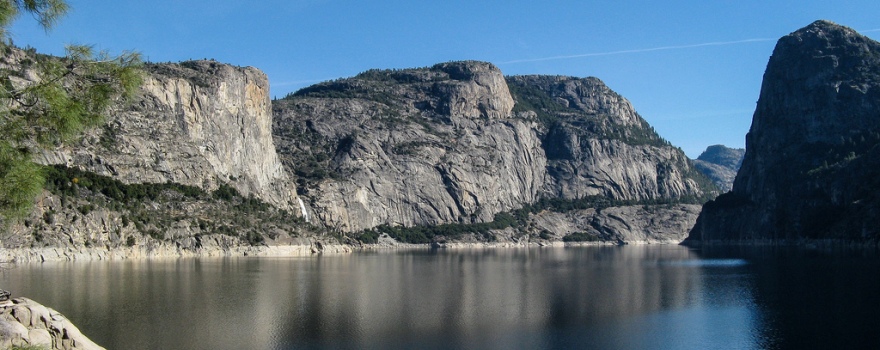Litigation necessary to preserve options for best outcomes for the environment and SFPUC’s 2.7 million water customers
From the San Francisco Public Utilities Commission:
In an effort to preserve options that will provide the best possible outcomes for the environment and the 2.7 million customers who rely on drinking water from the San Francisco Public Utilities Commission, the City and County of San Francisco today joined a lawsuit against the State’s implementation of the Bay-Delta Plan.
“San Francisco is leading a collaborative effort to protect the environment and plan for our future water supply, and we need the flexibility to continue this important work,” said SFPUC General Manager Harlan L. Kelly, Jr. “This legal action, while unfortunate, is needed to allow stakeholders to continue to work together on real solutions that will benefit both fish and people.”
Last month, the State Water Resources Control Board started the legal clock ticking by voting to approve an update to the Bay-Delta Plan, which calls for large increases in water releases on the tributaries of the San Joaquin River above the Bay-Delta. The updated plan is part of an effort to restore the ecology of the Bay-Delta system. That includes the Tuolumne River, which provides water via Hetch Hetchy Reservoir to Bay Area customers. The SFPUC has voiced concerns with the plan, as it would dramatically reduce the agency’s water supply, leaving it subject to significant rationing in droughts and potentially unprepared to deal with more extreme weather conditions brought on by climate change.
While the State Water Board approved the Bay-Delta Plan, it specifically acknowledged the progress of SFPUC and its partners for restoration and management plans for the Tuolumne River. The State Water Board has given the SFPUC and its partners until March to further develop these plans for the river. However, the legal window to contest the current version of the plan closes before March, necessitating today’s legal filing.
San Francisco prepared to start restoration efforts on Tuolumne River immediately
As part of a proposed voluntary agreement, the SFPUC and its partners have offered $76 million in funding for habitat restoration projects, such as creating more gravel areas for spawning beds and measures to reduce the effects of predation on young salmon. The SFPUC is currently evaluating which measures can be implemented immediately as a sign of good faith. Along with those measures, the SFPUC and its partners have proposed a schedule of functional water flows to produce positive environmental results for the Tuolumne River.
The SFPUC has consistently stated that these types of voluntary agreements are the best path forward for the Bay-Delta Plan, as the settlements strike the right balance between environmental stewardship and water reliability. By joining the lawsuit filed today by the San Joaquin Tributaries Authority, Turlock Irrigation District, Oakdale Irrigation District and South San Joaquin Irrigation District, the SFPUC can preserve all options moving forward to reach those voluntary agreements.
“This is an unfortunate but necessary step to preserve the rights of the 2.7 million Bay Area customers who rely on the Hetch Hetchy water system,” City Attorney’s Office spokesman John Coté said. “The state water board started the legal clock ticking and forced us to make this move. San Francisco proposed a deal that struck the right balance, but unfortunately the plan the state approved on December 12 would result in severe water rationing in drought years. We’re still optimistic that a compromise can be reached out of court that both enhances the fish population and preserves an adequate drinking water supply for millions of Bay Area residents.”
The SFPUC is taking a measured and responsible approach regarding long-term water management. California recently experienced droughts that extended beyond three years and experts say climate change will continue to impact precipitation. The State now requires water agencies to plan for a minimum 5-year drought. With more than 2.7 million customers relying on the SFPUC for clean, safe drinking water, the agency takes a conservative approach with an 8.5-year drought scenario plan, a necessary precaution in this time of climate change uncertainty.
About the San Francisco Public Utilities Commission
The San Francisco Public Utilities Commission (SFPUC) is a department of the City and County of San Francisco. It delivers drinking water to 2.7 million people in the San Francisco Bay Area, collects and treats wastewater for the City and County of San Francisco, and generates clean power for municipal buildings, residents, and businesses. The SFPUC’s mission is to provide customers with high quality, efficient and reliable water, power, and sewer services in a manner that values environmental and community interests and sustains the resources entrusted to our care. Learn more at www.sfwater.org.
San Francisco, farmers team up to fight California’s ‘water grab’
From the Sacramento Bee:
“The liberal city of San Francisco and conservative farmers in the San Joaquin Valley don’t have much in common politically. But they do agree on one thing: California regulators are going to take too much of their water and give it to endangered fish.
On Thursday, San Francisco joined a cadre of irrigation districts that pull water from the tributaries that flow into the Lower San Joaquin River in filing a lawsuit against a plan by the State Water Resources Control Board to take billions of gallons of their water. … ”
Read more from the Sacramento Bee here: San Francisco, farmers team up to fight California’s ‘water grab’
——————————————–
Sign up for daily email service and you’ll always be one of the first to know!
- Sign up for daily emails and get all the Notebook’s aggregated and original water news content delivered to your email box by 9AM. Breaking news alerts like this one, too. Sign me up!
 Maven’s Notebook
Maven’s Notebook
constantly watching over the world of California water


